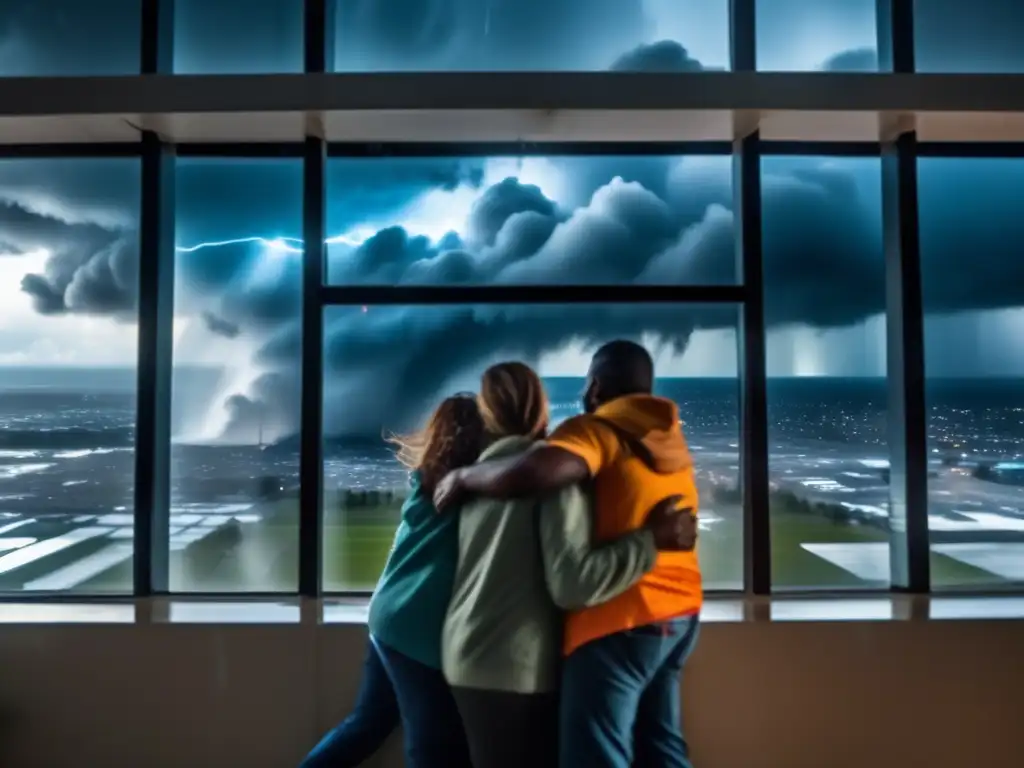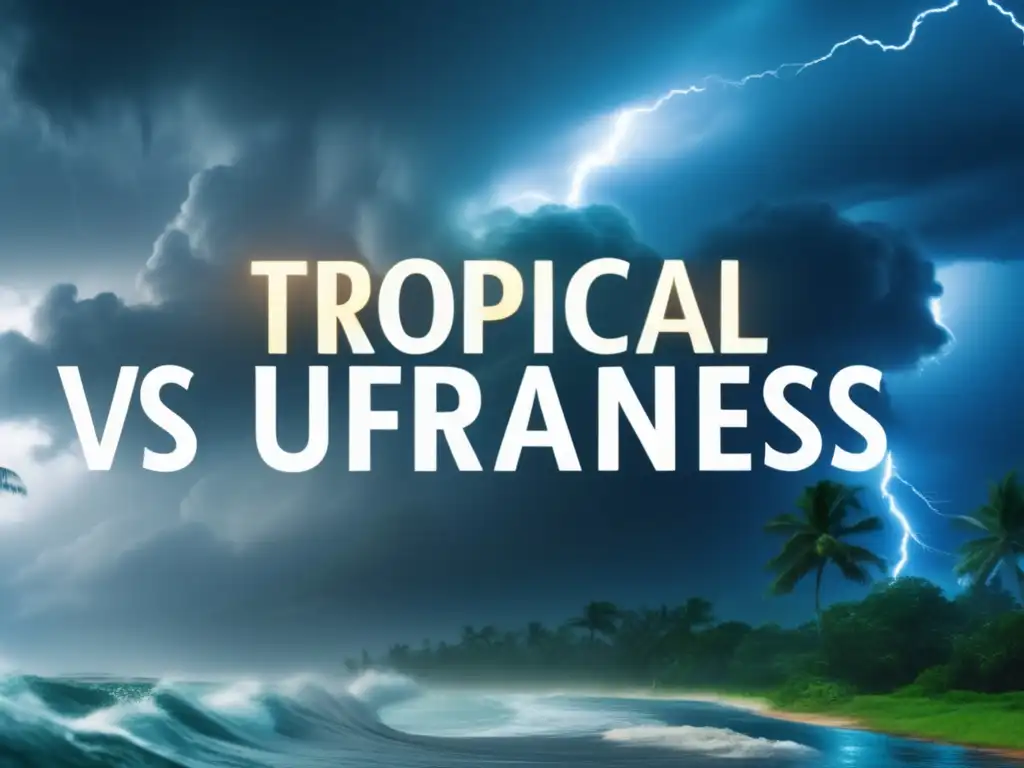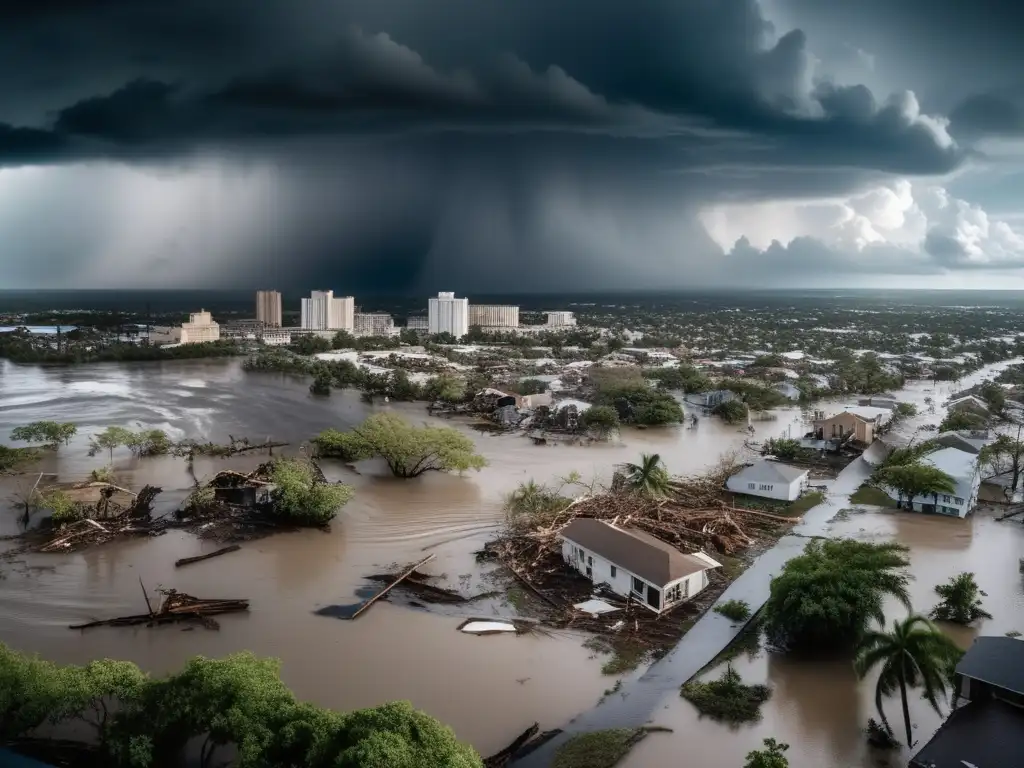Tropical Storms Vs Hurricanes: Key Differences

Tropical Storms vs Hurricanes: Key Differences
Introduction
Tropical storms and hurricanes are often associated with destruction and devastation, and understanding the differences between them is crucial in minimizing their impact. Tropical storms and hurricanes are both tropical cyclones, but they differ in their wind speeds and potential for damage. This article will explore the key differences between tropical storms and hurricanes, and provide insights on how to prepare for each of them.
The Anatomy of a Tropical Cyclone

What is a Tropical Cyclone?
A tropical cyclone is a rotating storm system that originates over tropical or subtropical waters. Tropical cyclones are classified by their sustained wind speeds, and their strength is determined based on the Saffir-Simpson Hurricane Wind Scale.
Tropical Disturbances, Depressions, and Storms
When the atmospheric conditions in a tropical region become favorable for tropical cyclone formation, a tropical disturbance can occur. A tropical disturbance is a cluster of thunderstorms that persist for at least 24 hours. These disturbances can sometimes develop into tropical depressions, which have a closed circulation and maximum sustained winds of less than 39 mph (63 km/h). When a tropical depression's winds increase to between 39 and 73 mph (63 and 118 km/h), it becomes a tropical storm.
The Birth of a Hurricane
A tropical storm can develop into a hurricane when its maximum sustained wind speed reaches 74 mph (119 km/h). At this point, the system is given a name. When a tropical cyclone becomes a hurricane, it gains a well-defined eye in the center, which is surrounded by an eyewall. The eyewall contains the most intense winds and rainfall. Hurricanes are categorized on the Saffir-Simpson Hurricane Wind Scale, which uses a rating of 1 to 5 based on wind speed, storm surge, and potential for damage.
The Differences Between Tropical Storms and Hurricanes

Wind Speeds
The primary difference between tropical storms and hurricanes is their wind speeds. A tropical storm has maximum sustained winds between 39 and 73 mph (63 and 118 km/h), while a hurricane has maximum sustained winds of at least 74 mph (119 km/h). The higher wind speeds associated with hurricanes make them more destructive than tropical storms.
Potential for Damage
The difference in wind speeds between tropical storms and hurricanes also means a difference in the potential for damage. While tropical storms can cause flooding and damage to structures, hurricanes can cause catastrophic damage to buildings, homes, and infrastructure. Hurricane-force winds can cause power outages, downed trees, and broken power lines, among other things.
Storm Surge
Storm surges are another major difference between tropical storms and hurricanes. Storm surge is the abnormal rise in water levels that is caused by a tropical cyclone's strong winds and low pressure. Storm surges can cause extensive coastal flooding and are responsible for much of the damage from hurricanes. Tropical storms can also cause storm surge, but the magnitude of the surge is generally less than that produced by a hurricane.
Preparing for Tropical Storms and Hurricanes

Tropical Storm Preparation
If you live in an area that is prone to tropical storms, there are several steps you can take to prepare. First, develop a family emergency plan, including a communication plan and evacuation routes. Make sure to have a disaster supply kit that includes food, water, first aid supplies, and important documents. Keep your home and property in good repair to minimize potential damage from high winds and heavy rain.
Hurricane Preparation
If you live in a hurricane-prone area, it's crucial to have a hurricane emergency plan in place. Your family emergency plan should include evacuation routes and a communication plan. When a hurricane watch is issued, start preparing your home by boarding up windows, securing outdoor objects, and ensuring that your disaster supply kit is fully stocked. When a hurricane warning is issued, follow the advice of local officials and evacuate if instructed to do so.
Frequently Asked Questions

-
What is the difference between a tropical storm and a hurricane?
The primary difference between a tropical storm and a hurricane is their wind speed. A tropical storm has maximum sustained winds of 39 to 73 mph (63 to 118 km/h), while a hurricane has maximum sustained winds of at least 74 mph (119 km/h).
-
What is storm surge?
Storm surge is the abnormal rise in water levels that is caused by a tropical cyclone's strong winds and low pressure. Storm surges can cause extensive coastal flooding and are responsible for much of the damage from hurricanes.
-
How can I prepare for a tropical storm or hurricane?
You can prepare for a tropical storm or hurricane by developing a family emergency plan, creating a disaster supply kit, and keeping your home and property in good repair. When a hurricane watch or warning is issued, follow the advice of local officials and evacuate if instructed to do so.
-
What is the Saffir-Simpson Hurricane Wind Scale?
The Saffir-Simpson Hurricane Wind Scale is a measurement used to categorize hurricanes based on their potential for damage. The scale ranges from Category 1, which has maximum sustained winds of 74 to 95 mph (118 to 153 km/h), to Category 5, which has maximum sustained winds of 157 mph (252 km/h) or higher.
-
How long do tropical cyclones last?
The lifespan of a tropical cyclone can vary widely, depending on several factors. Some storms may only last a few days, while others can last for weeks.
Conclusion
Tropical storms and hurricanes are both dangerous weather phenomena that can cause significant damage and loss of life. Understanding the differences between these two types of tropical cyclones is crucial in preparing for their impact. By following the advice of emergency officials and having a comprehensive emergency plan in place, you can help to minimize the impact of these powerful storms on your family and community.
Remember to stay informed about the weather and be prepared for the worst. By doing so, you can ensure that you and your family are ready to weather any storm.
Additional Resources

 How Hurricanes Are Named And Why
How Hurricanes Are Named And Why The Impact Of Hurricanes On The Fishing Industry
The Impact Of Hurricanes On The Fishing Industry Rebuilding After The Storm: The Social Impact Of Hurricanes
Rebuilding After The Storm: The Social Impact Of HurricanesIf you want to discover more articles similar to Tropical Storms Vs Hurricanes: Key Differences, you can visit the Basic knowledge about hurricanes: category.
Leave a Reply

Articulos relacionados: